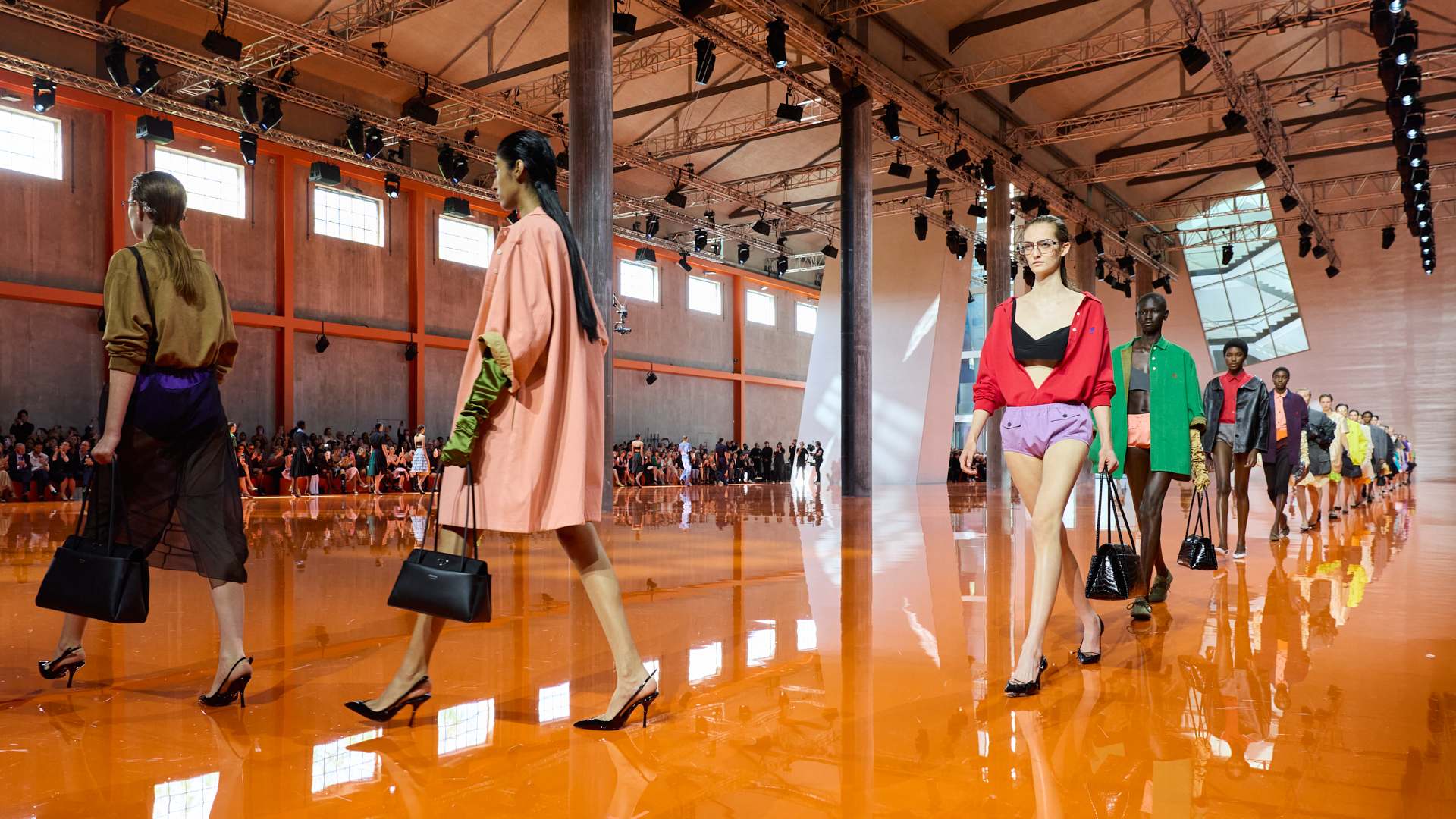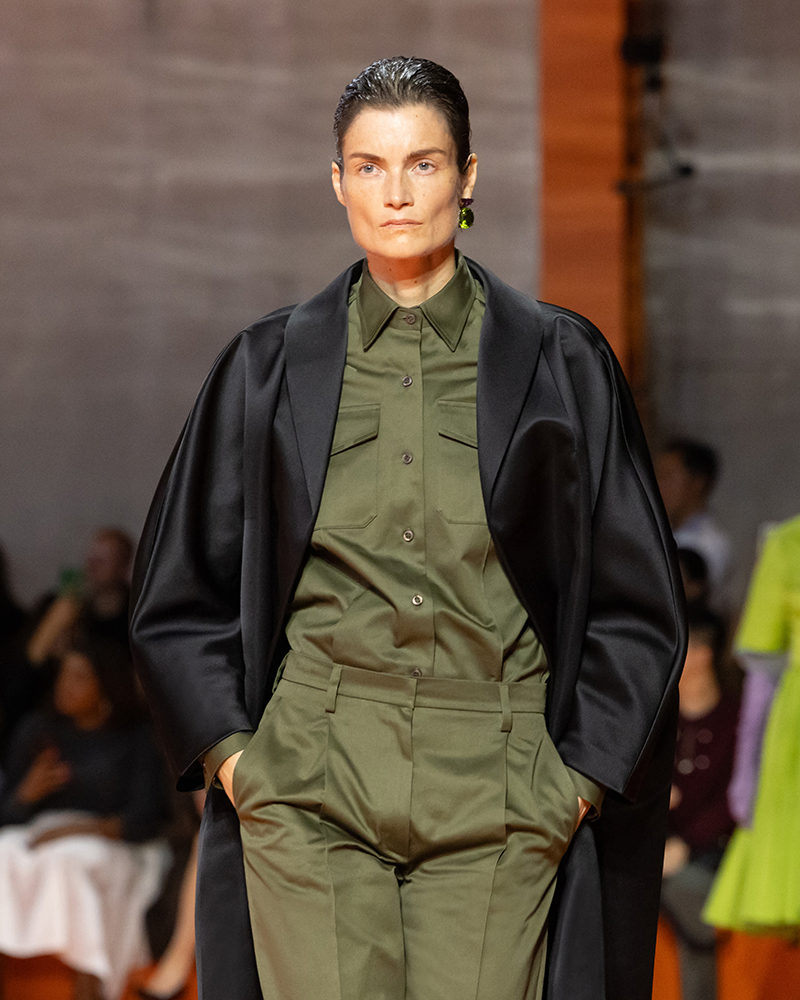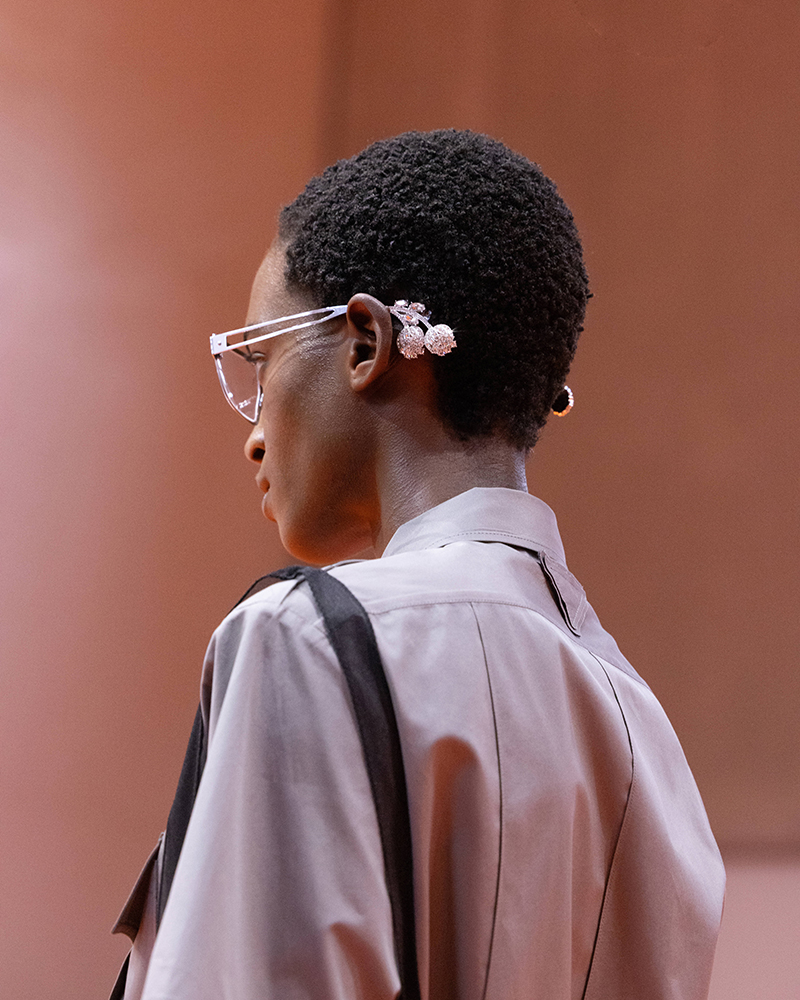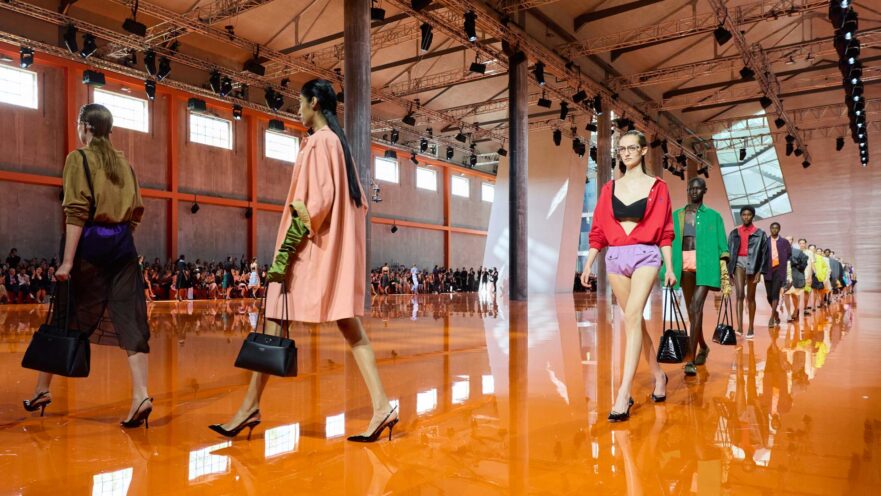FASHION
Prada Spring 2026

The Body of Composition
By Teneshia Carr
In a season defined by spectacle and noise, Prada chose stillness. The Spring/Summer 2026 collection titled “Body of Composition” was less about newness and more about distillation: a process of stripping, refining, and reconstructing meaning through the language of dress.
Miuccia Prada and Raf Simons continue to push their shared thesis, that clothing is not merely decoration, but a form of communication. Here, garments are not built around a body so much as composed upon it, like syntax arranged into a poem. The result is a collection that reads as both intellectual and emotional, an exercise in precision and disruption that reminds us why Prada remains the axis around which fashion’s ideas still turn. The set was austere, almost clinical, the light falling in long, diffused planes across the runway. Out of that clarity emerged clothes that spoke softly but with conviction. Each look seemed to have undergone a process of filtration, distilled down to its most essential elements.
Prada described the collection as “a response to the overload of contemporary culture—a process of distillation, of filtration through clothes.” That notion resonated through every seam. Structures were minimized; silhouettes floated rather than imposed. Skirts suspended from shoulders, shifting the logic of gravity. Brassieres appeared with volume but no visible structure, as if sculpted from absence itself. These were radical reconsiderations of what clothes can do. A jacket became a dress; an apron became armor. Uniforms, Prada’s eternal obsession, collided with eveningwear in deliberate dissonance, creating a new, unsentimental form of elegance.

For decades, Prada has explored the tension between beauty and awkwardness, the desirable and the offbeat. In Body of Composition, that duality is distilled into motion itself. The designers speak of dispersion and reunion, ideas, textures, and archetypes colliding on the body to create meaning.
There is something almost musical in the way these garments interact with each other. A sheer slip meets a boxy trench; chiffon brushes against structured cotton; lace interrupts nylon. Every look feels spontaneous, yet meticulously resolved. It’s the kind of tension Prada excels at, where accident becomes aesthetic, and the clash becomes harmony. Juxtaposition here isn’t contrast for its own sake; it’s the act of making sense of multiplicity. The collection acknowledges that identity today is complex, multifaceted, and continually evolving. As the press notes describe, “Pieces fluctuate and change, both within singular garments and on the individual… each composition transforms constantly, insistently, in reaction to the now.”
If the Fall 2025 collection explored the solidity of heritage, Spring 2026 turns to air. The clothes move with a lightness that feels architectural yet fluid. Pleats, folds, and darts aren’t devices of construction; they’re tools of freedom. The tailoring, though exacting, never feels rigid. Coats hang open like thoughts half-formed. Dresses ripple around the body as if designed to breathe. There’s a sense that every garment could be worn in multiple ways, that each piece carries within it the potential for transformation.
Simons’ precise minimalism meets Miuccia’s emotional pragmatism here. Together, they remind us that the future of fashion may not be about invention, but about re-composition and taking familiar forms and rearranging them to reveal new meaning.

In an age of excess, Prada proposes a new kind of luxury: one rooted in clarity. The “Prada uniform” reemerges not as repetition, but as reference and a baseline for experimentation. The pairing of daywear with evening textures, of masculine tailoring with fluid femininity, redefines the parameters of sophistication. The new Prada woman is not performing elegance; she is constructing it in real time. Her clothes adapt, shift, react. They are tools for living, not costumes for display.
There’s a subtle defiance in this restraint. In an era obsessed with spectacle, Prada’s refusal to decorate becomes a statement of confidence. To strip down is to know exactly what to keep. Perhaps the most poignant aspect of Body of Composition is its relationship with the body itself. The garments don’t impose idealized proportions or external fantasies; they respond to movement, presence, and the space around them. The body becomes a living surface, an active participant in creation.
This approach feels almost democratic in its sensuality. It acknowledges that beauty is not static. That elegance can exist in flux. That femininity is not a fixed construct, but a spectrum of possibilities continually rearranged. In doing so, Prada quietly dismantles the hierarchies of fashion. The distinctions between workwear and eveningwear, utility and ornament, dissolve. A cotton shift can hold the same emotional weight as a gown. Function and fantasy merge into something altogether modern: a wardrobe of intelligence.
At its core, this collection is a meditation on the nature of attention. In the overload of images and information, Prada reminds us to look closely, to see composition as an act of care. Every thread feels considered, every juxtaposition intentional. There is quiet power in that discipline. The runway became a space of reflection: a counterpoint to chaos, a call to see again. Fashion, here, isn’t shouting. It’s listening. And in that listening, Prada Spring/Summer 2026 finds its voice; clear, restrained, and entirely unafraid of silence.

